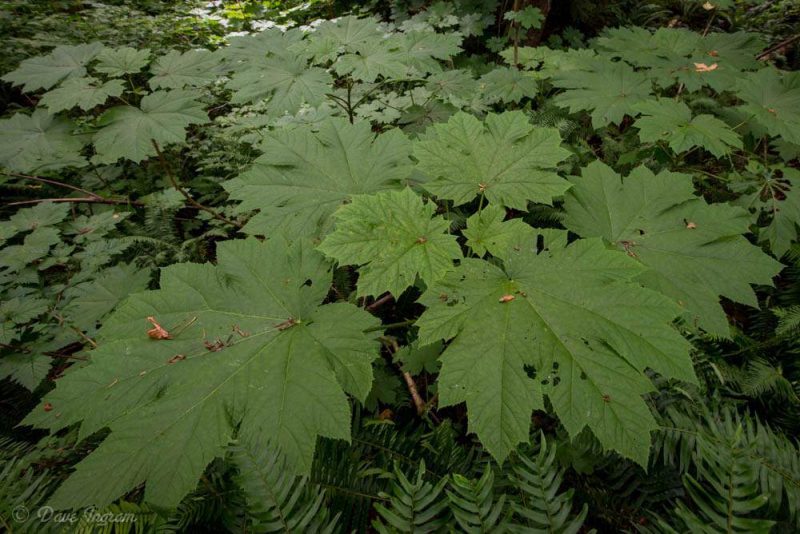
Maple-like leaves the size of a giant’s plate, clusters of bright red berries, thick twisted spine covered stems. Stumbling through a patch of Devil’s club (Oplopanax horridus) can be a memorable experience.
While the common name gives some indication of the nature of the plant, the scientific name is also very appropriate. Oplo refers to the “armour” of the fine spines, while panax relates to the medicinal uses of the plant — pan “all” + ax “heal” and its relationship to ginseng. Horridus refers to the “prickly or rough” spiny stems and leaves.
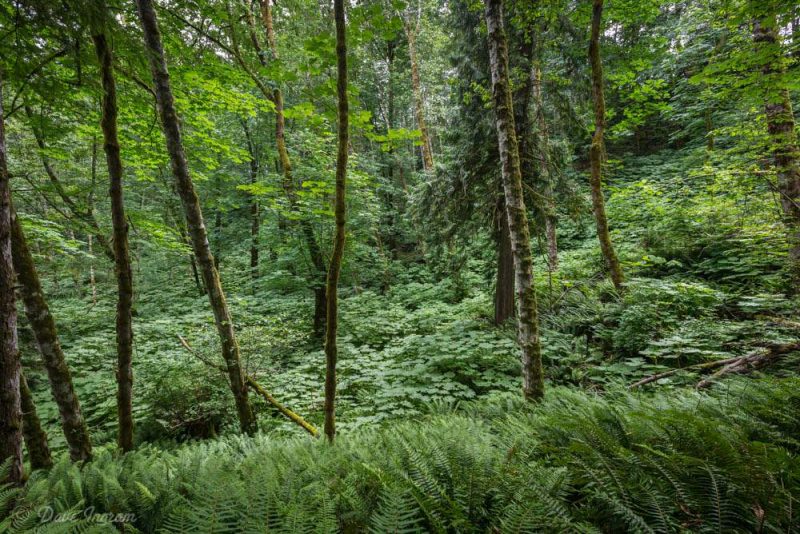
Devil’s club is one of my favourite West Coast plants and the 2.4 km Millennium Trail alongside the Campbell River in Elk Falls Provincial Park is an excellent place to find it. One section of the trail between the John Hart Generating Station and Elk Falls passes through a spectacular valley of Devil’s club. You can appreciate the plant from the “safety” of the boardwalk—observe with care since the fine spines can be very irritating if touched.
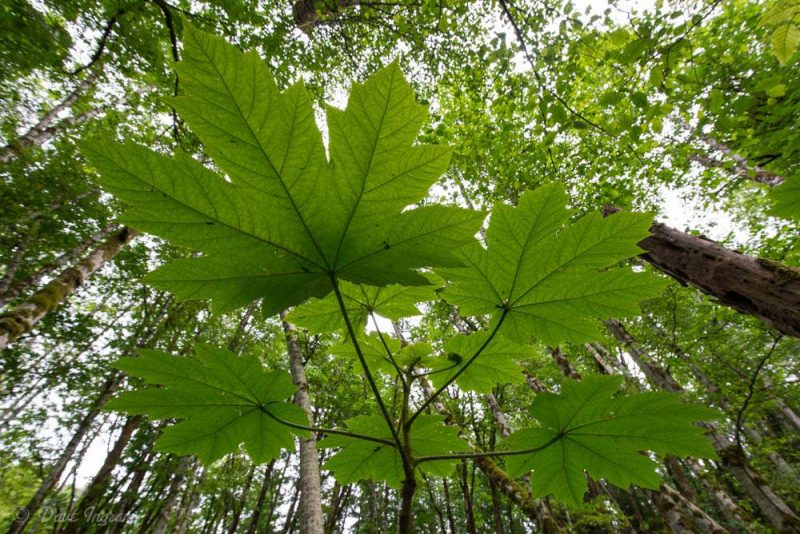
Last weekend I hiked part of the way to the falls, but got led astray by the Devil’s club. It’s at the stage between flower and berry, but it is hard not to be impressed by the flow of the huge leaves in the understory of red alder and bigleaf maple. Devil’s club prefers moist well drained forests and grows readily along side streams and seepage tracks.
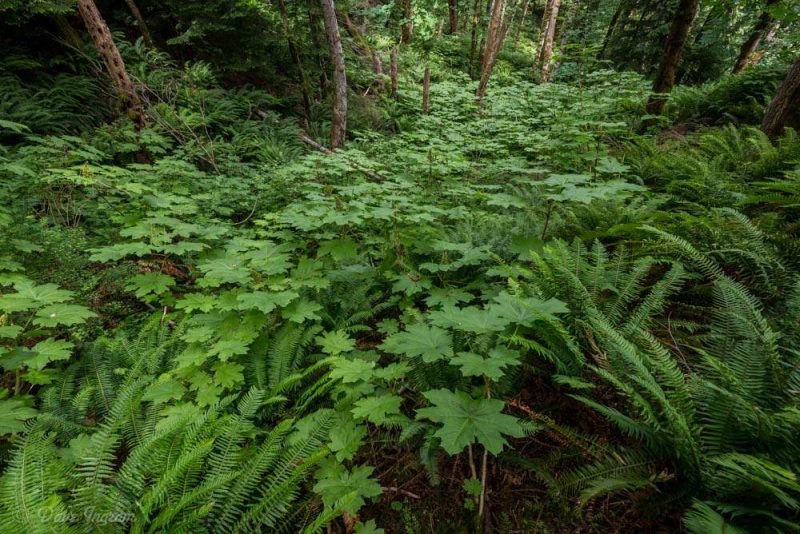
Lately I’ve been experimenting with photographing forest scenes and the jumble of plant life and finding a simple composition can be challenging. I made my way around the edge of the gully of Devil’s club and grappled with the challenge of trying to create a good image of both the plants and the habitat. It was growing in the wetter bottom areas around several trickling streams before giving way to clumps of sword fern on the drier slopes, and by sticking to the higher ground around the edges, I got a few images that I think worked fairly well.
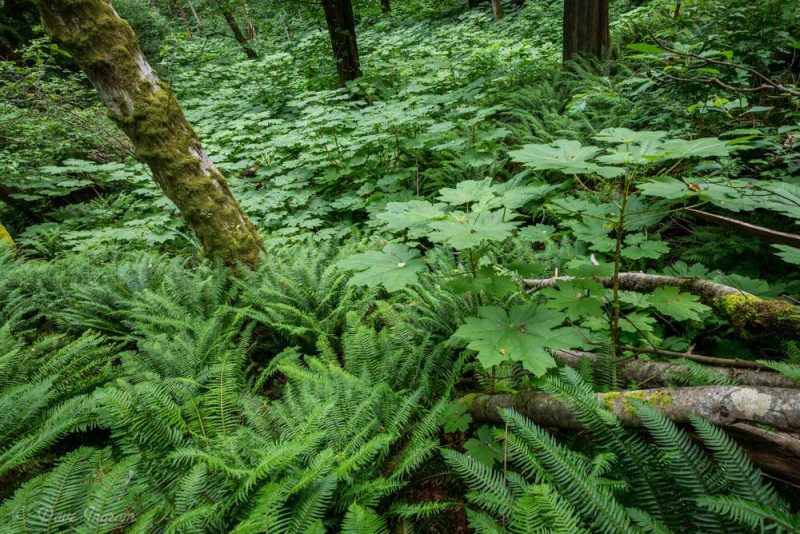
Devil’s club has a rich tradition of medicinal and First Nation’s use and is considered to be one of the most important medicine plants used by coastal groups in British Columbia. Pojar and MacKinnon’s Plants of Coastal British Columbia describes a whole range of uses for different parts of the plant including the use of the woody stems to make protective charms against evil.
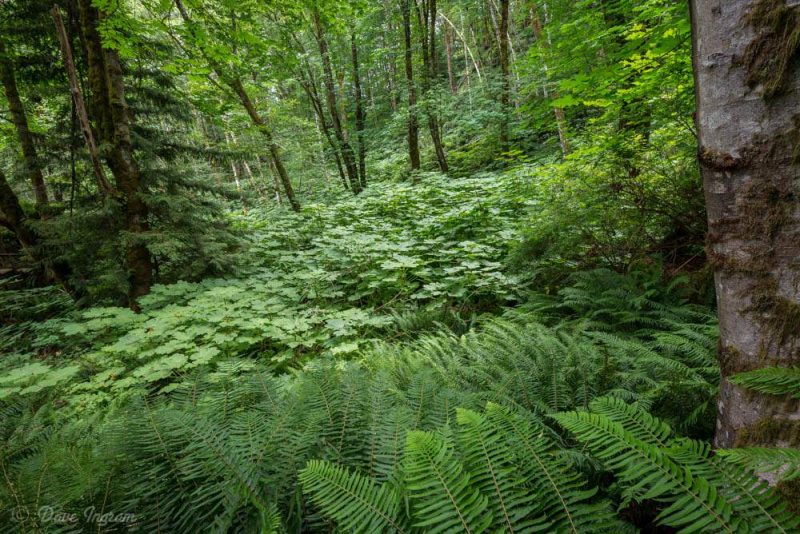
Make sure to look for Devil’s club at about the half-way point if you’re hiking from the John Hart Generating Station through to Elk Falls. The valley is truly amazing and the sheer abundance of this dramatic plant in such an accessible location makes it well worth a visit. Just be careful not to touch the spines!
These images and more are available as prints at http://DaveIngram.ca